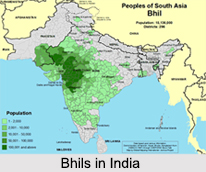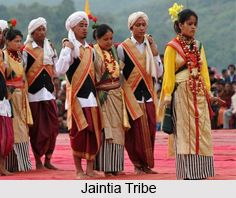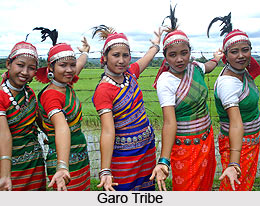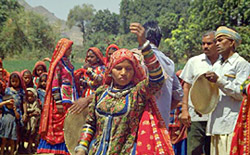 Tuolsuo Rituals comprise the precondition for performing Chang-Ai ceremony which is enlisted as a separate ritual prevalent in the tribe. The Kuki tribe places the credit on the women for achieving success in harvesting rich paddy crop for three consecutive years. In case the couple decides to perform the ritual of Chang-Ai, the tribe enlists some preconditions before the couple performs the rituals like Sa-Ai and Chang-Ai ceremony. These are the most auspicious ceremonies that are performed by the Kuki tribes to save their harvest from external attacks as well as attack from nature.
Tuolsuo Rituals comprise the precondition for performing Chang-Ai ceremony which is enlisted as a separate ritual prevalent in the tribe. The Kuki tribe places the credit on the women for achieving success in harvesting rich paddy crop for three consecutive years. In case the couple decides to perform the ritual of Chang-Ai, the tribe enlists some preconditions before the couple performs the rituals like Sa-Ai and Chang-Ai ceremony. These are the most auspicious ceremonies that are performed by the Kuki tribes to save their harvest from external attacks as well as attack from nature.
Tuolsuo Rituals include three stages through which the couple can seek purification. The couple who decides to perform such a ceremony must take full precautions of self restrain, and other methods of purification. The first stage includes a period of confinement for the couple who are segregated from the rest of the family members. They confine themselves in the innermost portion of the house which is separately built for the purpose. The ritual requires one spotless white cock which is to be sacrificed and cooked for the man who eats it without touching the bones. It also requires a new jar of Zu which is used during the performance of the ritual. In the first stage a separate hearth is constructed which is close to the pillars which is known as Sutpi. It is a prohibited area where no body is allowed to go. The Becha relatives inform the priest to perform the rites which are connected to the ceremony in which the priest requests the Becha to arrange a spotless cock and a new and unused jar of rice- beer.
Tuolsuo Rituals begin when the priest arrives in the evening. On his arrival he is offered a jar of Zu. The priest begins the ritual by reading the signs of the cock which is killed during the ritual as a token of sacrifice for better harvest. This is later on handed over to the wife who is supposed to dress it and prepare it for the man who shall take it once the ritual is over. Throughout the ceremony the priest remains engaged in uttering prayers and blessings for successful harvesting. The ceremony of Tuolsuo Rituals specifies that once the ritual is over the man is supposed to stay in isolation from all his relatives. While the wife has the freedom to move every where the husband shall have restrictions even in his movement. The first stage comes to an end with the dawn of the next morning. This can be repeated three times in a larger scale and can be performed in a wider scale from time to time depending on the capability of the participants. In the second stage the couple informs the Thiempu about their intension to proceed with the process of self purification and requests him to proceed with the rites to attain purity - physically, mentally and spiritually. For this the Thiempu instructs them to arrange a spotless cock like in the first stage and a pig which are to be killed and prepared in the same manner as in the first stage. While the husband and wife are engaged in performing the ritual the outside life is handled by the Becha and Tucha relative of the man. Thus in the second stage the father remains in isolation while the mother is free to move around while the son has no restrictions in movement. This is observed for three days for the husband`s personal purification and the stage of consecration. This brings the family to the third stage which has no fixed period. The performance of the third stage depends on the choice of the performer.
Tuolsuo Rituals in the third stage follow roundabout the same rites which have been followed in the first and second stage. Distinctively the third stage includes cutting of a tree which has at least one branch tilted towards the east. After the Becha and Tucha relatives identify such a tree they inform the priest to continue with the rites in which the priest requires one spotless cock as in earlier stages and one male pig whose bones are kept along with the branches of the tree. This is required for the ritual. All these finally end at performing the rituals for seeking blessings which can protect a rich harvest of the season.
Thus Tuolsuo Rituals pass through three elaborate stages and finally aim at assuring the family a successful agricultural output.





















